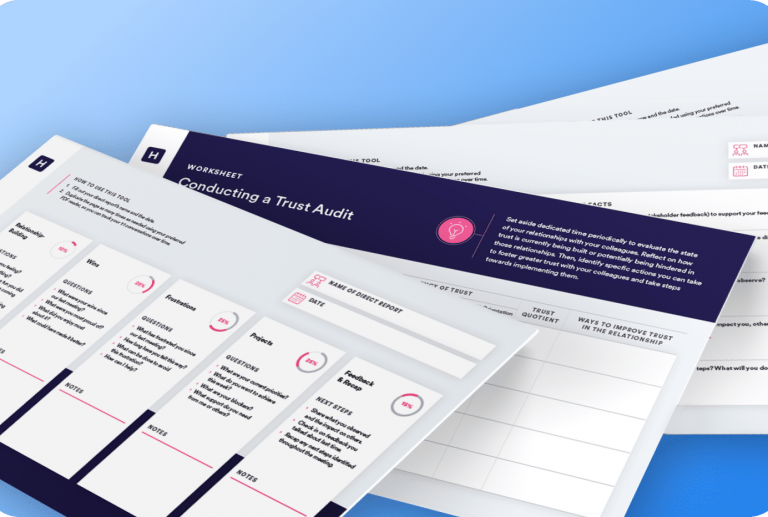What is an Employee Retention Rate?
The definition of employee retention rate is a metric that measures an organization’s ability to retain its employees over a specific period. It is calculated by dividing the number of employees who have remained with the company during a given period by the total number of employees at the beginning of that period, then multiplying the result by 100 to express it as a percentage.
A high retention rate suggests that employees are satisfied with their work environment, compensation, benefits, and opportunities for career advancement. In contrast, a low retention rate indicates that employees may be dissatisfied and look for opportunities elsewhere. Understanding and monitoring the employee retention rate can help organizations identify areas of improvement, make necessary changes, and maintain a stable and motivated workforce. Employee retention rate strategies are ways organizations try to keep employees. For instance, organizations can show they care about employee teams with appreciation ideas.
Why Are Retention Rates Important in the Workplace?
A retention rate can tell companies how long employees stay with the organization. For example, it can indicate that employees stay with a business for an average of one year. Additionally, a retention rate can also show when they leave. Namely, it could suggest that workers during certain seasons or events.
The retention rate definition is a ratio that counts the amount of something retained over a set time. Retention rates are metrics in several fields. In addition to workplaces, it is a term in education, investing, marketing, and other industries.
The following are some examples of retention rates:
- In education, it can refer to the number of students who continue their education.
- In investing, it is the portion of earnings retained to grow a business.
- In marketing, it measures the customers’ attraction and retention of a product, service, or brand.
What’s the Business Impact of Retention?
In almost any case, a high retention rate is a positive outcome. Businesses can only achieve goals if they have the talent with the right skills. A healthy employee retention rate keeps companies moving forward. The longer employees stay with the organization, the more profound their knowledge and the higher their productivity rate. As a result, the company is more successful. Long-term workers know business nuances only learned from experience. For instance, employees become more familiar and knowledgeable about specific clients and vendors.
Conversely, workers leaving employment costs companies money. Organizations experience productivity loss when they have vacant positions. In addition, they experience recruiting and training expenses to fill open roles.
The cost to replace workers can be 50-60% of their annual salary. But the total price can be as high as 200% when considering the overall organizational performance.
This financial forfeiture could be better spent retaining top talent through:
- Retention programs
- Improving training strategies
- Employee offerings
- Enhancing company culture
Low retention and engagement rates lead to lower productivity. Likewise, departing workers have an emotional cost. As a result, the remaining employees can lose motivation and morale as the workforce dwindles.
One of the biggest reasons for quitting is the need for more engagement. Companies that learn how to use values to engage teams may reduce resignations. Additionally, more workers may end up leaving and further the cycle.
Measuring the retention rate based on voluntary turnover can tell a company a lot about its culture. In addition, businesses can set benchmarks by calculating retention rates routinely.
Employee Retention Rate vs. Turnover Rate (or Churn Rate or Attrition Rate)
The churn rate is the percentage of employees who leave a company during a given period. To calculate the turnover rate, divide the number of employees who left during that period by the number of employees at the beginning of the period and multiply by 100.
The following are the three key differences between the terms:
- Employee retention rate is calculated by dividing the number of employees who remain with a company over a given period by the number of employees at the beginning of the period and multiplying by 100. On the other hand, the churn rate is calculated by dividing the number of employees who left the company during a given period by the average number of employees over that same period and multiplying by 100.
- Employee retention rate measures the percentage of employees who stay with a company over a given period, regardless of whether they joined or left. In contrast, the churn rate measures the percentage of employees who left the company during a given period, considering the average number of employees. Therefore, the churn rate provides a more comprehensive view of employee attrition in a company.
- Employee retention rate measures how well a company is retaining its employees. In contrast, the churn rate measures how many employees leave the company over a given period. Employee retention rate provides a positive perspective on employee attrition, while churn rate provides a negative attitude. Moreover, churn rate can help identify underlying issues or patterns related to employee departure.
Employee Retention Rates vs. Average Tenure
Average tenure refers to the average length of time that employees stay with a company. To calculate the intermediate term, divide the total years that all employees worked for the company by the number of employees.
The following are the three key differences between the terms:
- First, the employee retention rate is calculated by dividing the number of employees who remain with a company over a given period by the number of employees at the beginning of the period and multiplying by 100. On the other hand, the average tenure is calculated by dividing the total years that all employees have worked for the company by the number of employees.
- Employee retention rate focuses on the percentage of employees who remain with a company over a given period, regardless of how long they have been with the company. In contrast, average tenure focuses on the length of time employees have worked for the company, irrespective of whether they are still employed.
- Employee retention rate measures how successful a company is at retaining its employees over a given period, while average tenure measures the average length of time that employees have worked for the company. As a result, the employee retention rate can provide insight into the company’s ability to retain talent, while average tenure can indicate its employees’ level of experience and loyalty.
What is a Good Retention Rate for a Company?
A reasonable retention rate is higher than 90%. Certain factors improve retention rates. For instance, employees stay at organizations longer if there is high internal mobility. Companies with manager training strategies have methods for workers to move up the corporate ladder.
Organizations with high retention rates have identified why employees join, stay, and leave. The following are some ways to pinpoint these motives:
- Entry interviews
- Requesting feedback
- Anonymous surveys
- Employee net promoter score (NPS)
- Insights from coaches and consultants
- Exit interviews
Once identified, they can create retention programs to meet unique needs.
Retention Rate of Employees
According to the U.S. Bureau of Labor Statistics, the average turnover rate was 47.2% for 2021. This means that the retention rate – the inverse – was around 52.8%. But this is a rough measurement since it includes all employment separations.
The average retention rate varies drastically by industry. Industries with high retention rates include the government, finance, manufacturing, and education. On the other hand, customer service industries typically have lower retention rates.
The following are some separation rates by the industry for 2021:
- Accommodation and food services – 86.3%
- Leisure and hospitality – 84.9%
- Arts, entertainment, and recreation – 76.3%
- Retail trade – 64.6%
Another factor that influences the retention rate is employee generation. For instance, Millennials are more than twice as likely to resign than Baby Boomers if dissatisfied.
Personal factors also influence workers’ likeliness of quitting. For example, employees with children are more open to switching jobs.
Factors Affecting Employee Retention Rates
Several factors can influence employee retention rates. Here are some of the most important ones:
- Workplace Culture: Refers to the values, beliefs, and behaviors that characterize a company. A positive workplace culture can increase employee satisfaction and loyalty, while a negative one can drive employees away.
- Compensation and Benefits: This includes salary, bonuses, health insurance, retirement plans, and other perks that employees receive. Competitive compensation and benefits packages can attract and retain top talent.
- Opportunities for Growth and Development: Employees want to feel like they’re progressing in their careers. Companies that invest in employee training and development can keep their employees engaged and motivated.
- Work-Life Balance: Employees want a good balance between their work and personal lives. Companies that offer flexible schedules, remote work options, and other work-life balance initiatives can improve retention rates.
- Leadership and Management: Employees want to work for leaders and managers who support and inspire them. Conversely, poor leadership and management can demotivate employees and drive them away.
How to Calculate Your Company’s Employee Retention Rate?
A retention rate formula typically results in a percentage. To calculate the retention rate, divide the total number of employees who stayed until the end of a period by the beginning amount. Then, multiply the result by 100.
Consider the following example:
- A company has 150 employees on January 1
- By the end of the year, 120 of those employees still worked for the company
- 120 / 150 = 0.80
- 0.80 x 100 = 80%
The formula does not usually include new hires. The calculation must only count the workers who stayed throughout the measurement period. So, the company would not include any new employees who filled the 30 vacant positions.
Organizations can measure their retention rate for any period. Often, they calculate it annually or quarterly.
Retention Rate Formula Factors
Employment separation occurs when workers leave voluntarily or involuntarily. Voluntary separations include employees quitting or retiring. Additionally, workers may leave employment because of a mutual agreement, such as at the end of a contract.
Some examples of involuntary separations include terminations for:
- Misconduct.
- Violating company policy.
- Poor work performance.
- Company layoffs.
Companies should not use all types of employment separation to calculate retention rates. For instance, an individual leaving employment for retirement often does not reflect the organization.
For the employee retention rate, calculations should only measure voluntary separations. For example, workers may quit or resign for a better job opportunity, relocation, or other reasons. An exit interview helps clarify why a worker is leaving a company.
Strategies for Improving Your Employee Retention Rate
Here are some effective strategies for improving employee retention rates:
- Employee Engagement: This refers to employees’ emotional connection with their work and employer. Companies can increase engagement by listening to employees, offering feedback, and recognizing their contributions.
- Recognition and Rewards: Employees want to feel appreciated for their hard work. Therefore, companies can provide recognition and rewards programs, such as bonuses, promotions, and other incentives, to retain top talent.
- Training and Development: Companies can invest in training and development programs to help employees build new skills and advance their careers.
- Career Advancement Opportunities: Employees want to know that they have opportunities for growth and advancement within a company. Companies can offer clear career paths and internal promotion opportunities to retain top talent.
- Flexible Work Arrangements: Companies can offer flexible work arrangements, such as remote work options, flexible schedules, and job sharing, to improve work-life balance.
Training and Its Impact on the Employee Retention Rate
Retention rate is closely connected to training in the workplace because training and development opportunities can significantly impact employee engagement, job satisfaction, and overall retention rates. Employees who feel valued, supported, and invested in by their organization are more likely to remain committed to the company and less likely to leave for another job.
Employees who are given opportunities to develop their skills and advance their careers feel more fulfilled and motivated in their roles. Training and development programs can help employees acquire new knowledge and skills, enhance their existing abilities, and prepare them for future career opportunities. In addition, this investment in employee development conveys that the organization values its employees and is committed to their success.
Practical training and development programs can also help address potential dissatisfaction and disengagement in the workplace. For example, employees may feel disengaged if they are not receiving feedback on their performance or if they are not clear about their career paths within the company. Training and development programs can help address these issues by providing regular feedback and guidance, setting clear expectations, and providing opportunities for career advancement.
An intense training and development program is essential for improving employee engagement, job satisfaction, and retention rates. By investing in employee development, organizations can build a stable and motivated workforce committed to the company’s success.
Employee Retention Rate Takeaways
The most important thing that Learning and Development (L+D) leaders need to know about the employee retention rate is that it is a critical indicator of the overall health and success of the organization. A high retention rate means employees are engaged, satisfied, and committed to the organization. In contrast, a low retention rate suggests that there may be problems with the work environment, company culture, or other factors causing employees to leave.
As an L+D leader, it’s essential to understand that employee development and career growth opportunities are significant drivers of a positive employee retention rate. Providing employees with opportunities for skill development, career advancement, and leadership training can help increase employee engagement and job satisfaction, ultimately leading to higher retention rates. L+D leaders should work closely with HR and senior leadership to identify the root causes of high turnover and implement practical training and development programs to address these issues.
In addition, L+D leaders should regularly monitor the employee retention rate and use this data to inform their training and development initiatives. They should also seek feedback from employees and use this feedback to improve the employee experience and increase retention rates. By focusing on employee development and providing a positive work environment, L+D leaders can help increase the employee retention rate and build a robust and motivated workforce.








